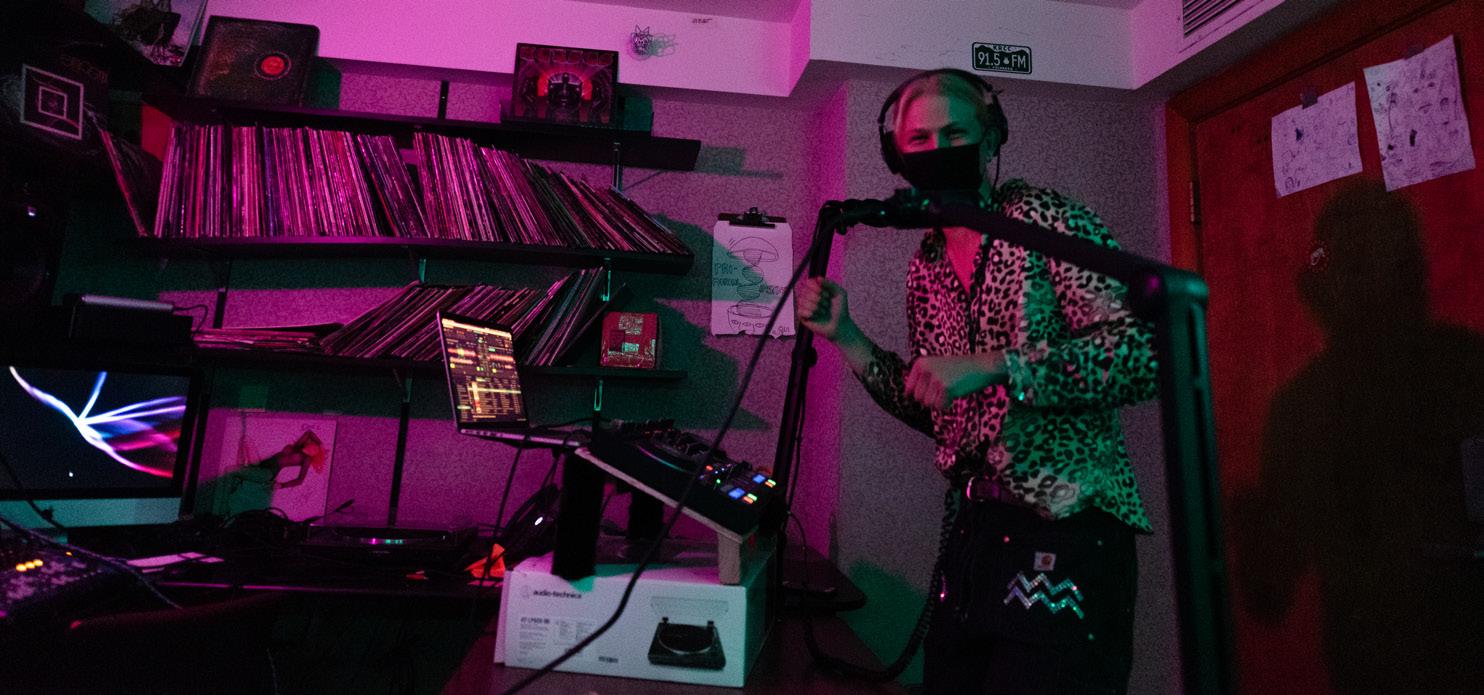
29 minute read
Alumni and Family Activities
ALUMNI ACTIVITIES
HOMECOMING 2020 VIRTUAL DANCE PARTY
Advertisement
In true 2020 form, this year’s annual Homecoming became
a home-staying. But even with canceled on-campus events, the COVID-19 global pandemic couldn’t keep CC alumni from connecting across the miles. Virtual Homecoming events organized by CC’s Office of Alumni and Family Relations allowed alumni to engage with one another in new ways over Homecoming weekend.
Typically held under the tent on Tava Quad, this year’s Homecoming Dance took a creative spin by delivering music virtually to living rooms across the country. Guest DJ Idris Goodwin, director of the Colorado Springs Fine Arts Center at Colorado College, kicked off the event before handing it over to student DJs Sai (Pranav Sai ’22) and Bichonfrisé (Ben Shumlin ’21) from the Sounds of Colorado College. Alumni, as well as current students and CC staff and faculty, tuned in live and danced together from the comfort of their living rooms, dorm rooms, or even on the beach. Some alumni even showcased their dance skills for all later in the evening, as the cameras turned away from the DJs and onto the people enjoying their music.
This year has shown all of us that there is truly no substitute for in-person connections — the smiles, the hugs, the laughs. But, we are thankful for all those
The event kicked off with guest DJ Idris Goodwin, director of the Colorado Springs Fine Arts Center at Colorado College. Photo courtesy of Idris Goodwin.
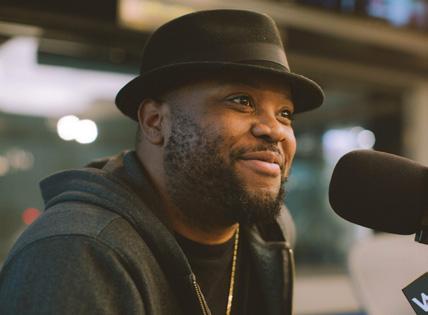
who still chose to connect virtually, share memories, engage with old friends and new, and celebrate the resilient CC Tiger spirit.
As a part of the Virtual Homecoming, DJ Bichonfrisé (Ben Shumlin’21) played a set for the virtual dance party. Photo by Chidera Ikpeamarom ’22
HOMECOMING WEEKEND 2021
Plans are currently underway for a combined Homecoming Weekend, Oct. 7-10, 2021, for
all 2020 and 2021 reunion classes. The health and safety of our CC alumni, student, faculty, and staff community continues to be our top priority, and we will continue to assess the impact of COVID-19 as we move forward with plans. We hope that having additional classes celebrating together will create an even richer Homecoming experience for all.
HERE’S WHO WILL BE CELEBRATING CLASS REUNIONS IN 2021:
1959, 1960, & 1961 1964, 1965, & 1966 60th
55th
1970 & 1971 1975 & 1976 1980 & 1981 1985 & 1986 1990 & 1991 1995 & 1996 2000 & 2001 2005 & 2006 2010 & 2011 2015 & 2016 50th 45th 40th 35th 30th 25th 20th 15th 10th 5th Young Alumni
2017, 2018, 2019, 2020, & 2021
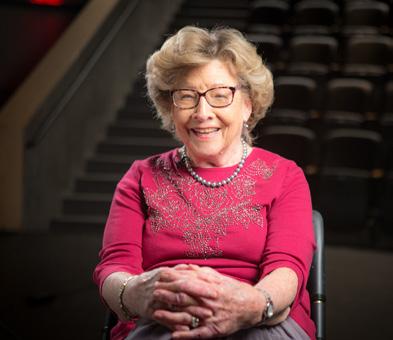

SHARE YOUR
BLOCK PLAN STORY
There’s still time to share your own Block Plan story: coloradocollege.edu/blockplan50

HAPPY 50TH BLOCK PLAN!
The Block Plan celebration marks the 50th anniversary of Colorado College’s innovative one-class-at-a-time academic system — the Block Plan. The Block Plan celebration involves a year of events and programming highlighting the impact the Block Plan has had on those who have experienced it as faculty, staff, and students. And as we celebrate the past, we also look forward to taking it into the next 50 years and beyond.
During the virtual Homecoming 2020 events this fall, Professor Emerita of History and former Dean of the College Susan Ashley, along with Associate Professor and Chair of the English Department Steven Hayward, provided a glimpse into their collaboration over the past three years leading up to the forthcoming release of Ashley’s book, “The Block Plan: An Unrehearsed Educational Venture,” and the documentary feature film, “The Block Plan,” which Hayward wrote and co-directed. Their conversation, “Inside the Block,” was a live virtual event for alumni, and can now be accessed as an online recording at 2cc.co/insidetheblockvid.
On Feb. 14, 2021 (we do love the Block Plan, after all), the film, book, and a series of podcasts will be launched as CC continues to celebrate and commemorate this important anniversary. In anticipation of this release date, we invite you to view the film trailer on CC’s website at 2cc.co/bp2020, and watch your email inbox for more information on how you can join in on the celebration!
The making of "The Block Plan" documentary brought together many of the key stakeholders who launched the Block Plan at CC 50 years ago. Photos by Bryan Beasley.
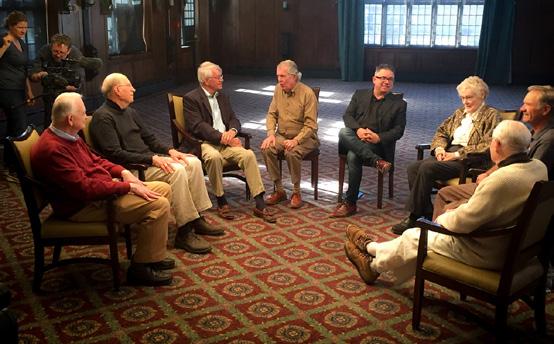
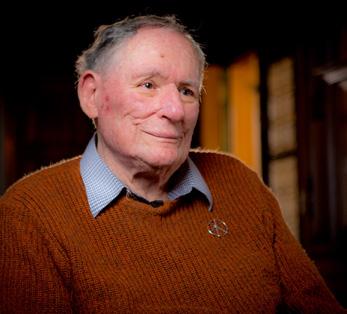
SAVE THE DATE
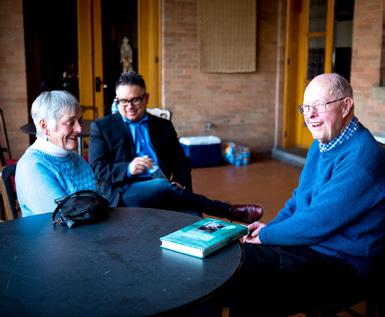
Get ready to celebrate with the Feb. 14, 2021 release of Ashley’s book, “The Block Plan: An Unrehearsed Educational Venture,” the documentary feature film “The Block Plan,” written and co-directed by Hayward, as well as a series of podcasts that take a deeper dive into the Block Plan’s past, present, and future.

THESE MILES HOLD MEMORIES
Celebrating 50 Years of the Aspen Bike Trip
By Valerie Hanna ’18
The first-ever block break at Colorado College occurred in September 1970, marking the end of the very first class conducted on CC’s new academic schedule, now the
iconic Block Plan. Coincidentally, this also marked the genesis of a now-beloved CC tradition, the Aspen Bike Trip. For the past five decades, the trip has remained an arduous yet rewarding adventure for CC students, bringing together both novice cyclists and seasoned fanatics.
As Shove Chapel strikes noon on the fourth Wednesday of Block 1, 50 students close their laptops, turn in their final papers, grab their helmets, and begin the first uphill climb of the Aspen Bike Trip. The first day (45 miles) takes the group through Woodland Park to Round Mountain Campground, just past Lake George. On the second day, the group logs a whopping 74 miles, biking down Wilkerson Pass, through Buena Vista, and ending at the idyllic Twin Lakes. The final stretch is a short but arduous 18 miles up from Twin Lakes to Independence Pass, elevation 12,095 feet. After celebrating together (and often with curious strangers), the group cruises down the mountain — an exhilarating 19 miles of pure downhill, with breathtaking views of the Maroon Bells, into the town of Aspen. The weekend is full of golden aspen trees, delicious food, and new friends. Not much has changed in 50 years — the touring route, silly costumes, and enthusiasm has held strong over the decades. Alumni across generations remember the feeling of summiting Independence Pass, the new friend who helped them fix a flat tire, and of course the whoops of encouragement, salty snacks, and free rides from the support vans, which flag the cyclists during the trip. Melissa Walker ’72 participated in the very first ride to Aspen in 1970, one of three women on the trip. She didn’t own a bike at the time, and borrowed a 10-speed Raleigh Record from a classmate. “I didn’t know what to expect, but I wanted to try something new,” says Walker. Born and raised in the small town of Minden, Louisiana, Walker had followed her older brothers Rolle Walker ’69 and Winston Walker ’70 to CC, drawn to a small college, a liberal arts education, and the beautiful Colorado mountains. Walker’s younger sister Priscilla Walker Engeln ’73 (married to Jay Engeln ’74) also attended CC, as did
Walker’s husband, Les Goss ’72. Walker recalls a quirky end to the trip. Instead of vans, the group of approximately 20 students piled into a propeller plane, and flew from Aspen to the Colorado
Very first Aspen Bike Trip, in 1970. Photo courtesy Melissa Walker ’72
Springs airport. “It was a mass of people and wheels,

with the bikes jammed into the aisle,” she remembers. “But we were too tired and happy, and enjoying new friends, to care about the tight quarters.” When they landed at the Colorado Springs airport, the group hopped back on their bikes, and rode from the tarmac to campus. “Biking that last stretch home to CC, I truly felt like I was flying,” says Walker.
In later years, the Aspen Bike Trip began to take on new significance. Early in 1978, two first-year CC students, Andrew “Andy” Reich ’81 and Paul Scoggins ’81, died tragically in a plane crash together. Reich was a skilled cyclist, and while he never had the chance to participate in the Aspen Bike Trip, participants across the years claimed him as their own. Fellow CC students founded the Andy Reich Spirit Award, which is presented each year “to the participant who best personifies the camaraderie, endurance, determination, and love of nature that Andy associated with biking.” Each year, a student’s name is added to a plaque, which lives in CC’s Outdoor Education office. Reich’s family also generously endowed a fund to subsidize the Aspen Bike Trip, which helps to offset the cost of gear, food, and transportation. Through the Andy Reich Award and his family’s generous scholarship, Reich’s memory and legacy live on. Most will agree that the trip is more about the people than the mileage. While CC’s cycling team has been integral to the trip planning over the years, and while the trip attracts passionate cyclists, many participants have never biked more than a few miles
before embarking on the trip. Bevo Cathcart Tarika ’81, P’12, P’14, P’18 first rode the trip her sophomore year. She recalls fellow classmate Stan Stockdale ’83 riding up Independence Pass on a single-speed bike, much to the amazement of the other riders. Tarika received the Andy Reich Award in 1979, the year after Reich and Scoggins passed away. Tarika cherished the trip, and went on to help lead it her junior and senior years. Her daughter, Alexandra Tarika ’12, also rode on the Aspen Bike Trip decades later as a CC student.
Kendall Rock ’15 has fond memories of being the only first-year participant, riding with mostly senior students. “I didn’t know anyone on the trip, but a group of older girls took me under their wing and we became fast friends. When I got to the top of Independence Pass, the students who had already finished made a tunnel for us to ride through, and then I joined the party. At that moment, I knew I’d picked the right school.”
The Aspen Bike Trip has connected CC alumni across generations. “Every year I rode, there would be some older alum who would pull over in their car somewhere along Highway 24 because they noticed our costumes,” Teo Price-Broncucia ’14 says. “They would ask us if we were biking to Aspen, and share that they had done that trip some 20 or 30 years back.”

Top left: James Harley Berglund ’80, in 1979. Photo courtesy Bevo Tarika ’81; Middle: Lennard Zinn ’80 became a famous cyclist and founded a bike shop in Boulder. Photo courtesy Bevo Tarika ’81; Right: For decades Twin Lakes Restaurant/Hotel was the highlight of the Aspen Bike Trip. Students would get to Twin Lakes to unwind at the restaurant, Photo courtesy Bevo Tarika ’81; Bottom left: Bevo Tarika ’81 and unidentified student at Independence Pass.
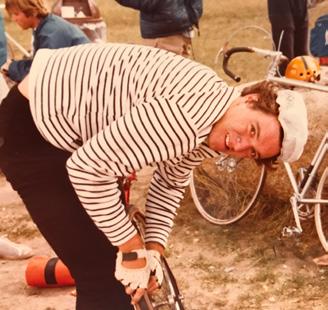
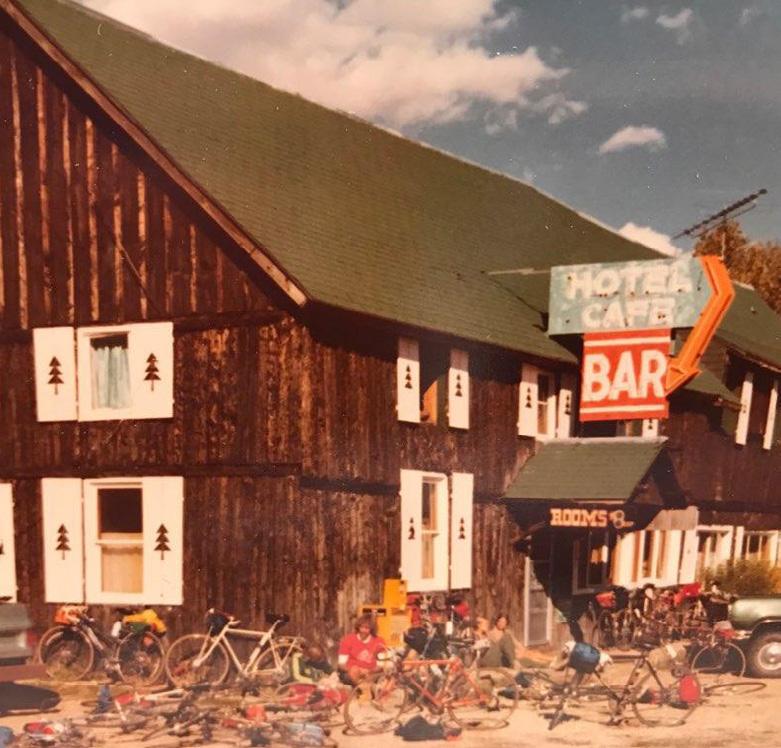



Top left: Top of Independence Pass group in 2018. Photo courtesy Naomi Tsai ’19; Top right: Cheering tunnel at Independence Pass. Photo courtesy Kendall Rock ’15; Bottom left: The vans are an integral part of the trip, and this shot shows the camaraderie and entertainment during breaks. Photo courtesy Kendall Rock ’15; Bottom right: Top of Independence Pass group in 2019. Photo courtesy Ben Murphy ’20.
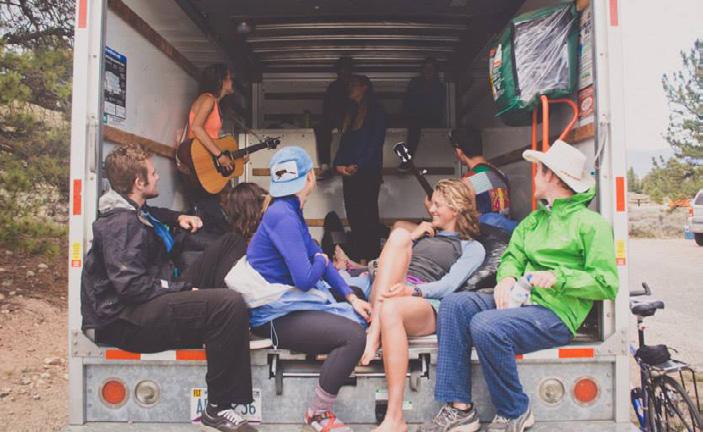

Price-Broncucia first rode the trip as a sophomore, and went on to help lead his junior and senior years. Then as a young graduate, he had his own surprise. Price-Broncucia was hired to work at a wedding in Aspen the fall after his graduation, and a sunny morning in late September found him shuttling chandeliers and decorations from Denver. As he rounded the last turn up Independence Pass, he spotted a group of young people celebrating and an equal number of bikes — simply by chance, he had crossed paths with the Aspen Bike Trip at the peak of their journey.
For many, the trip also holds personal significance. Erika Berglund ’15 signed up for the Aspen Bike Trip her junior year because her father James Harley “Barney” Berglund Jr. ’80, P’15 insisted she had to try it before she graduated. He was awarded the Andy Reich Award alongside Tarika in 1979. James passed away during Berglund’s junior year at CC, and her senior year, she joined the trip again, this time as a co-leader. “That last Aspen Bike Trip was indescribable. I was carrying on my dad’s memory, and sharing a special CC tradition with new students.”
Just as the CC bike trip has welcomed backcountry beginners since its founding, CCOE is committed to increasing access and opening doors. In recent years, CCOE has provided additional funding to offset bike rentals for participants, which is a barrier for many students. The office runs outdoor trips year-round, and offers low-cost and free rentals, training, and skill-building for CC students of all experience levels.
Safety is also a top concern. Traffic on Highway 24 has increased in recent years, and in 2019 CCOE changed the route to start from Woodland Park, eliminating the most trafficked leg of the route. COVID-19 also posed a safety concern this year, and CCOE had to postpone the in-person trip. Instead, they hosted a virtual Aspen Bike Trip using the free app, Strava. Participants logged their miles on Strava and CCOE tracked their progress, entering all finishers into a raffle. With nearly 50 participants in the Strava challenge, including alumni and current students, 2020 marks another successful year of the Aspen Bike Trip. “Of course, it wasn’t the same as previous years, and we’re sad that we had to cancel on the 50-year anniversary,” says Associate Director of Outdoor Education David Crye. “But the great turnout for the virtual ride and the wonderful stories we’ve heard over the years make us excited for what’s to come!”
So, next time you’re on Highway 24 and notice the aspen leaves turning gold, keep an eye out for young cyclists. A fellow CC Tiger may be just around the bend.
A MOMENT IN TIME
Class of 2020 Alumni Reflect on This Year
The Class of 2020 ended their time at CC like no other
before them. So where are they now? What are they doing? And how has their unique perspective shaped their path forward? We caught up with eight recent graduates to hear about their experiences.
MOLLY HINIKER
MAJOR: ECONOMICS HOMETOWN: EDINA, MINNESOTA

The high from my quarantine was getting to
play a lot of golf. I played a lot in high school but backyard celebration. We had dinner, played board games, and my parents arranged for some of my closest friends to come “speak” in a virtual ceremony. While it was not the graduation I had expected, the celebration we had meant more because of all the love they put into it. I did, however, hit a low point back in July after being a final candidate for a few jobs and still not being chosen. I took a trip to Joshua Tree (pictured right) and it really helped me just clear my head and regain the energy I needed to keep going. Getting outside when I could has definitely kept me grounded in quarantine, and I am happy to say I am now gainfully employed. One of my top CC memories is the night I was initiated into Delta Gamma in the Fall of my freshman year. I had never expected that I would be someone who would join a sorority, and at the time I had no clue how much that experience would end up meaning to me. It turned out to be hands-down
didn’t get the chance to play much while at CC, and I played probably three rounds per week from midApril until the end of the summer. The low from my quarantine was not being able to see my friends from CC. I played on the soccer team and lived in an eight-person apartment on East Campus, so going from being surrounded by my friends to having none of them around was hard. the best decision I made in college. That night started four years in the community that would keep me centered when times were rough, and it introduced me to some incredible women who are still the most important people in my life. I just finished my first month working for Bard Academy and Bard College at Simon’s Rock as an admission counselor. The school is a small liberal arts college and boarding high school in Great Barrington, Massachusetts. Speaking of, if you know someone who wants to start college early after My most memorable CC moment was beating Air Force in the last game of the 2019 regular season and my career. Although the games around the league didn’t go our way that night, we beat Air Force in the last five minutes of the game on the road, and we never lost to them during my time at CC.
I am in my first semester of the two-year MBA program at the University of Notre Dame. Classes are in-person and everything is going really well. In the year ahead, I’m really looking forward to things getting back to normal. I’m hoping to be able to take a trip with some of my CC friends, and I’m also hoping to be able to go to a couple big sports events in the next year like the U.S. Open and the College
A highlight of quarantine was the day I finally
finished college. My family surprised me with a
OLIVIA CALVI
MAJOR: RELIGION, CLASSICS MINOR: HUMAN BIOLOGY & KINESIOLOGY HOMETOWN: WOODLAND HILLS, CALIFORNIA

Football Playoff. the 10th or 11th grade, definitely check us out. I’m working remotely from Los Angeles and will be moving to western Massachusetts in January 2021. I’m nervous for the big change, but am looking forward to next year when I get to see some true fall foliage and leave behind the 95-degree days of October in SoCal.
My highlight of quarantine has been spending a lot of quality time with my friends and family.
I’m usually home six to seven weeks out of the year, so seeing my niece and hanging out with my crazy, loud family is something I’ll always treasure. Quarantine also made me realize all the goodbyes and “lasts” that I missed out on as a senior. There was so much time left until the end of the year, and it took a toll on my mental health for the first couple of months. I now know that distance learning is not for me!
My most memorable moment from CC is a person. I met my best friend at Colorado College, and who would’ve thought that we would end up traveling to multiple countries together, eat way too much frozen yogurt, and waste a lot of money at Target.
My low of quarantine was the immediate scramble into the unknown at the beginning.
Taking my final class online was certainly not ideal, but it did bring my friends and me a lot closer to make the most out of our last two blocks safely. The highs of this quarantine were all the times my family and friends would find creative ways to be together during the past few months, from Zoom calls and dinners, to even a socially distanced grad party. The most memorable moment of my CC experience was our film class’ trip to the Sundance Film Festival at the beginning of this year. My fellow seniors and I were able to spend a week at the festival basking in the inspiration, knowledge, and fun that an international festival had to offer us — something that would never be possible without the Block Plan.
KEKAI WONG YUEN
on the right MAJOR: ENGLISH: LITERATURE MINOR: ART HISTORY, ASIAN STUDIES HOMETOWN: HILO, HAWAII

Right now, I have two fellowships: I am a Congressional fellow with a program called Running Start, an organization that promotes women to run for office one day. I am working on my mock campaign and meeting with amazing women, mentors, financial advisers, and campaign advisers to learn about the campaign process. Also, I am an intern for Representative Sharice Davids (Kansas’ 3rd district). I’m learning a lot about the legislative process and fighting for Indigenous voices.
CODY LEONG
MAJOR: MOLECULAR BIOLOGY HOMETOWN: HOUSTON, TEXAS

A high from quarantine was being able to spend more time with both my immediate and extended family, as it had been quite a while since I had the opportunity to spend a significant amount of time home in
Houston. Unfortunately, right at the beginning For the past few months I have been working as a server in Jackson Hole, Wyoming, trying to make the most of my time in the outdoors. In the next year I am looking forward to continuing to pursue my passion for documentary films by freelancing for local companies and finding ways to connect with people as this time continues. of quarantine, I took a spill off a skateboard and broke my collarbone (the first time I had ever broken a bone!) and had to get surgery. Thankfully, the recovery went well!
My highlight of CC was taking part in a backcountry skiing training as a participant through the Outdoor Education program, and then leading the same training the following year. I am currently on the job search, having recently returned to Colorado. In the year ahead, I am definitely looking forward to the return
ELLA GROSSMAN
MAJOR: FILM AND MEDIA STUDIES MINOR: ENGLISH HOMETOWN: SANTA MONICA, CALIFORNIA

of live music and sports. (If it’s safe to do so, of course!)
ANTHONY RODRIGUEZ
on the left MAJOR: CLASSICS MINOR: HISTORY HOMETOWN: NORTH CHICAGO, ILLINOIS
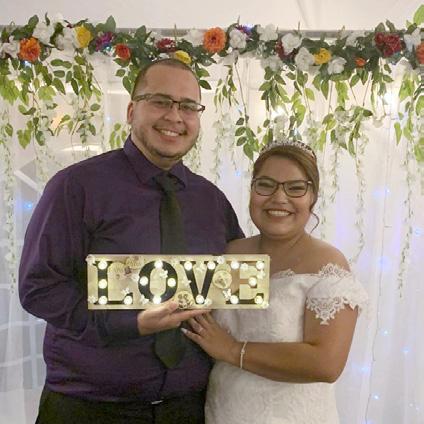
My low during quarantine was losing my grandfather to the Coronavirus back on
While the original plan to pop the question did not pan out, we were able to be surrounded by our immediate family for the proposal, which was truly special. One of the challenges that went along with having to leave Colorado College was not knowing that Block 6 would be the last time I would see a lot of my friends. While Zoom provided a way to check in with each other, it was not the same as spending late nights eating pizza or watching the sunrise on the last week of school. However, I am hopeful that we will all reunite for a belated graduation ceremony! Looking back on my time at Colorado College, the special moments for me were not necessarily what May 10. It was about a week and a half or so after I finished my thesis and officially graduated. My high was marrying my high school sweetheart. others would perceive as noteworthy. Some of my favorite moments were singing songs in empty lecture halls with my first-year roommate, hurling myself down a sled hill, and just joining a classmate for coffee and a great conversation. The summation of small moments like these, in addition to all the great offerings CC provides, is what made my time in college special. After Colorado College, I moved to Salt Lake City to begin my graduate degree in atmospheric sciences at the University of Utah. It has been great to work
My highlight from quarantine was hiking in Maine with my girlfriend and my dog when we
were stuck because of COVID-19 security. My lowlight was getting super lost on that same trip and eventually having to hitchhike home. We’ve been together eight and a half years and married one another on Oct. 10.
My most memorable CC experience is when I finally had my solidified friend group. Shoutout to Edgar, Andrew, Noah, Esteban, Lee, Darryl, and Shane!
I’m still looking for a permanent job since my grandfather’s passing really put a stop on my life for a while. Right now, I’m working to assemble new, fast COVID-19 tests. I’m just an assembler, but I hope that the nonstop repetitive movements I do all day help
Even though ending my time at Colorado College during a pandemic was not ideal, quarantine provided an opportunity to get engaged
to my girlfriend of five years, Zoë Blandon ’20.
NOAH HIRSHORN
on the left MAJOR: ENVIRONMENTAL SCIENCE: CHEMISTRY HOMETOWN: LAYTON, UTAH

others with earlier detection and treatment of the virus. as part of the Hallar Aerosol Research Team doing relevant work within the realm of atmospheric chemistry. I am excited to continue to explore Utah in the coming year as I continue working
HENRY SWAIN
on the right MAJOR: PHILOSOPHY HOMETOWN: CAMBRIDGE, MASSACHUSETTS

to earn a Ph.D. One of my best memories from college was going to Indian Creek, Utah, with my friends for block break my junior year. One night we hiked up a ridge and watched the sunset over the canyons with a speaker and a few drinks. I will always remember that moment.
I am currently driving from Florida to Massachusetts (as I write this, I’m eating BBQ for a lunch break in Savannah, Georgia). The plan is to momentarily live at home while looking for an apartment and a job in downtown Boston. I’m excited to take the next step! This photo is of me and Taylor Bigony ’20 paddle boarding on Lake Tahoe.
By Elliott Williams ’21
Colorado College has an endowment of approximately $804 million. The full-pay cost for the 2020-21 academic year was $74,256. Why is the sticker price for CC (and higher education as a whole) so high when our endowment is well over half a billion dollars? This is a question that frustrated me for years as a student, until I learned more about the nuts and bolts of CC’s financial model.
Now, in my role as student trustee, I am learning more about financial planning. The Board of Trustees focuses on long-term implementation, ensuring that the college is in a strong financial position for years to come. During open office hours with fellow students this fall, I have had some enriching conversations with my peers, and I’m excited to share some highlights from these conversations.
WHAT MAKES COLORADO COLLEGE A NONPROFIT?
CC, and nearly all higher education institutions, are nonprofits. We have costs (paying faculty and staff, offering financial aid, campus maintenance, constructing buildings for classrooms, etc.) and revenue (tuition, room, and board fees; money earned from the endowment; and annual gifts and grants), but not profit. There is no owner of CC who cashes out when we have a successful year, nor is there a group of shareholders interested in making money who run the school (most for-profit companies have one or both of these). On the contrary, the Board of Trustees works together to support the college’s growth. Trustees do not make money — we are volunteers and donors who give financial contributions to the school every year.
HOW DOES THE ENDOWMENT WORK?
Let’s say a donor gives a nonprofit a $100 gift. The donor and the nonprofit want to make the gift last, so rather than spending it all at once, they invest the $100 through the endowment and spend only $5 of the earnings each year. If the nonprofit received a donor gift to spend immediately, the original $100 gift would run out in 20 years ($100 divided by $5 per year equals 20 years). If, however, the nonprofit invests the principal $100 into the stock market, the principal can earn approximately 5%, or $5, each year. Precisely because the principal is never spent, the nonprofit can spend $5 each year indefinitely. After 20 years, the nonprofit has spent $100 and still has the original $100.
REVENUE SOURCES: WHERE DOES THE MONEY COME FROM?
FIGURE 1
67% 23%
10%
23% Endowment
10% Annual Gifts
67% Tuition and Fees
Scale up: CC has a $804 million endowment. We invest this principal in various types of investments, including the stock market, and earn roughly 5% ($40 million) per year. We do not spend our endowment; we spend what we earn on our endowment. Just as with the smaller-scale model using $100, this structure ensures that we can make our money last longer than if we spent it like a checking account.
WHERE DOES ENDOWMENT MONEY GO?
Again, we can’t spend the principal $804 million endowment, but it still brings us 5%, or $40 million, annually. Roughly 23% of our annual operating budget — what it costs to run the school each year — comes from the endowment’s earnings. The rest of the money comes from tuition, room, and board fees (67%), and grants and annual gifts (10%). This means the endowment actually subsidizes the cost of tuition for all students, including full-pay.
WHAT IS THE TRUE COST OF A CC EDUCATION?
Without the subsidy endowment and annual gifts, the true cost of a CC education is nearly $97,000, well over $20,000 more than the full-pay sticker price (in the 2020-21 academic year, $74,256).
The true cost of a CC education is calculated by dividing operating costs (in 2020, $203.4 million) by the number of students (in 2020, approximately 2,100), which totals $96,857, or nearly $97,000 per student. Note: Operating costs include paying our faculty and staff, financial aid, and caring for our grounds and buildings. Charging the true cost would not only make CC inaccessible to students who rely on financial aid but would deter even prospective students and families who could pay the high price. Higher education is a unique nonprofit sector in that there are quasi “customers” (students and families) who compare prices and offerings of various schools, forcing institutions to compete with one another. Because our peer institutions subsidize the cost of tuition for all students, we must do the same to offer a competitive price.
2020 EXPENDITURES (SHOWN IN PERCENTAGES), TOTALING $203.4 MILLION FIGURE 2
1.1% 5.1% 4.6%
6.7%
20.1% 44.8%
2.9%
2.5% 12.2%
Compensation $91.1 Million (44.8%) Fees/Contracts $24.9 Million (12.2%) Employee Conferences $5.1 Million (2.5%) Interest $5.8 Million (2.9%) Scholarship Allowance/Financial Aid $40.8 Million (20.1%) Instructional Operations $13.7 Million (6.7%) Information Technology $2.3 Million (1.1%) Plant Operations $10.3 Million (5.1%) Depreciation $9.4 Million (4.6%)
DAVIDSON
MIDDLEBURY
COLBY
CARLETON
COLORADO COLLEGE WHITMAN
MACALESTER
LAFAYETTE
COLGATE
WESLEYAN
COLLEGE OF THE HOLY CROSS
KENYON
BATES
PITZER
$250,000 $500,000
$750,000 CC ENDOWMENT PER STUDENT COMPARED TO PEER INSTITUTIONS
FIGURE 3
The endowment per student is the overall endowment as reported by National Association of College and University Business Officers (NACUBO), divided by the number of undergraduates cited in the Common Data Set. Source: 2019 NACUBO and Commonfund Institute Study of Endowments.
WHY ISN’T CC NEED-BLIND?
While our endowment has seen remarkable growth (over $300 million) in the last decade, CC’s endowment per student is still significantly less than that of many of our peer institutions. When students compare our financial aid offerings to schools like Princeton University and Williams College, for example, the differences in endowment size must be considered. In the 2018-19 academic year, Princeton’s endowment per student was more than $3 million, Williams’ was nearly $1.4, and CC’s was $373,000. To be need-blind in admissions, CC would need to double its endowment.
This being said, CC is a “meet need” school, meaning that we will meet the demonstrated need of all students who are accepted. While some schools with smaller endowments advertise as need-blind, they “gap” students, meaning they accept students regardless of their demonstrated need, but do not provide a robust financial aid package. Consequentially, these students with need often graduate with large amounts of debt. Only about 25 American colleges and universities are need-blind and meet full demonstrated need.
HOW CAN WE GROW OUR ENDOWMENT?
CC’s endowment is smaller than many of our peer institutions because we are notably younger and thus have had less time to receive large gifts and grow our endowment through investments. For example, we are 60 years younger than Colby College (endowment value $869.9 million as of 201819) and 80 years younger than Williams College (endowment value of $2.9 billion as of 2018-19).
Additionally, we have significantly lower alumni participation in giving than other schools. As of 2019, the two-year average participation rate (percentage of alumni who have given any dollar amount to their institution in the last two years) among our peer institutions was 36%. CC’s participation rate was 22%. One in three alumni from our peer institutions regularly give to their alma mater, while only one in five CC alumni give to theirs.
WHY GIVE TO CC?
Giving is a personal decision, and there is no single reason. Many students and young alumni who I have talked to don’t know that when giving to CC, you can decide where your money goes. Whether you want to give to an academic department, financial aid, or your club sports team, the choice is yours. Gifts of every amount make a difference; in 2019 alone, Annual Fund gifts of $250 or less totaled nearly $1 million.
I give to CC because I want future students to access the incredible experience that I have been afforded. I know I will continue to benefit from this education years into the future, whether applying what I’ve learned in CC courses, nourishing lifelong friendships with classmates, or engaging with the CC alumni network to further my professional development. I’m grateful to the CC community, and am honored to give back.

